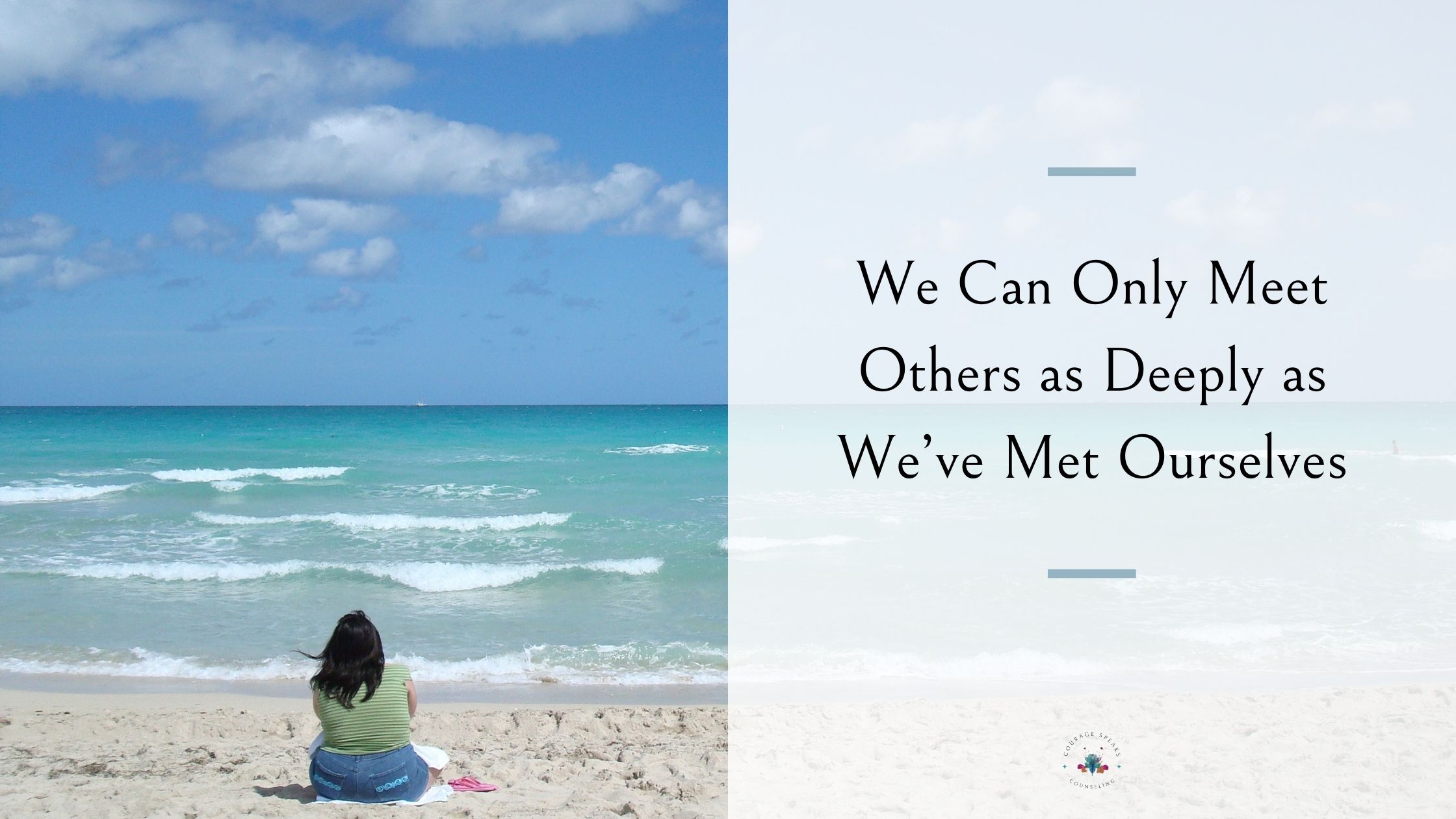
Before, After, and Now: Healing After Life-Altering Events
Healing isn’t about returning to who you were—it’s about learning to live fully in the present and trusting the unfolding of your journey after life-altering events.

Have you ever felt like someone just didn’t “get” you? Maybe you’ve shared a vulnerable part of yourself, only to be met with blank stares or a response that felt off, as if the other person wasn’t really seeing you. It can leave you feeling misunderstood, disconnected, or even questioning if you should have shared at all.
Here’s the thing: we can only meet others as deeply as we’ve met ourselves. The depth of connection we’re capable of offering depends on how much of our own inner world we’ve explored.
When we haven’t looked at our own wounds or struggles, we might unintentionally block ourselves from truly seeing others. We don’t mean to—we’re just protecting ourselves. If someone shares their pain or complexity with us, and we haven’t worked through our own similar feelings, it might feel overwhelming, uncomfortable, or even triggering. We might shut down or offer surface-level support because it’s all we can manage.
On the flip side, when we’ve spent time getting to know the parts of ourselves we’ve avoided or ignored, something shifts. We build a capacity to stay present with discomfort—our own and others’. We understand what it means to sit with something hard, to feel seen and accepted in that space, and we naturally start offering that to others.
We all have parts of ourselves we avoid because they carry pain—memories of rejection, feelings of unworthiness, or beliefs that we’re too much or not enough. These are the parts of us that hold fear, shame, and grief. And when we haven’t made peace with them, we might resist connection that feels too intimate or raw because it risks exposing those places.
For example, if someone expresses deep sadness and we haven’t faced our own grief, it’s tempting to change the subject or offer advice to “fix” it, rather than sitting with them in their pain. It’s not because we don’t care—it’s because their pain touches something in us we haven’t been ready to face.
Going deeper doesn’t mean fixing everything about ourselves or erasing our wounds. It’s about curiosity and compassion. It’s about sitting with the uncomfortable parts of ourselves, getting to know them, and letting them know they’re not alone.
Here’s the humbling truth: just as we can only meet others as deeply as we know ourselves, others can only meet us as deeply as they know themselves. It’s not personal—it’s a reflection of where they are on their own journey.
Understanding this can change how we approach relationships. Instead of expecting others to show up in ways they’re not yet capable of, we can accept their limitations with compassion. We can decide how close we want to be, knowing their capacity may not match ours—and that’s okay.
The invitation here isn’t to judge yourself or others for where you’re at. It’s to get curious about the parts of yourself you haven’t fully met yet. What feelings do you avoid? What stories do you tell yourself about your worth, your relationships, or your value?
The deeper you go within yourself, the more you expand your capacity to connect with others. You become a safe place—not just for others, but for yourself. And from that place, connection isn’t something to fear. It becomes something to embrace.
Because when we truly know ourselves, we create space for others to be fully known, too.
Embracing Shadows, Illuminating Hope,
Chelsey Fjeldheim, LCSW
Empowering Souls on the Path of Healing
Copyright © 2025 Chelsey Fjeldheim, Courage Speaks Counseling

Healing isn’t about returning to who you were—it’s about learning to live fully in the present and trusting the unfolding of your journey after life-altering events.

Healing isn’t about fixing yourself. It’s about staying present, feeling fully, and letting transformation happen without force.

There’s no perfect time to start therapy, but if you feel stuck, disconnected, or overwhelmed by change, it might be the right time to explore it.

Because you matter. You are important. You are worth it.